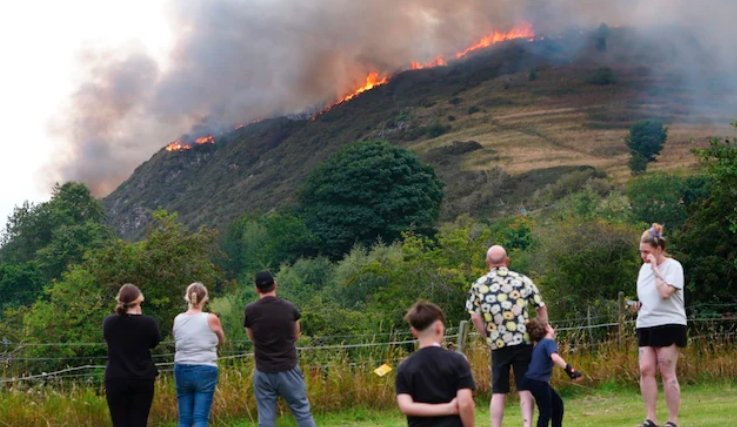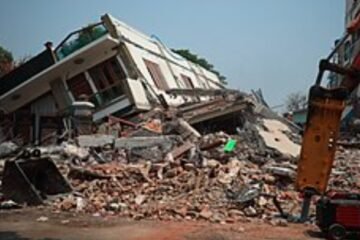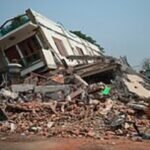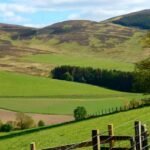A large blaze tore through Arthur’s Seat on Sunday, sending smoke over Edinburgh’s skyline and prompting warnings for the public to stay away from one of Scotland’s most-visited landmarks.
Smoke Over the City
Arthur’s Seat isn’t just a hill—it’s the extinct volcano that dominates the city’s horizon. At about 250 metres high, it offers panoramic views stretching from Edinburgh Castle to the Firth of Forth. On Sunday, however, those views were obscured by thick smoke as flames spread across its slopes.
The Scottish Fire and Rescue Service confirmed crews were at the scene tackling the blaze in Holyrood Park. Police warned both motorists and pedestrians to steer clear, with parts of the surrounding area cordoned off for safety.
From several vantage points across the capital, the fire was visible as a wide grey plume curling into the summer sky, the kind of image that makes locals pause mid-step and visitors reach for their phones.

A Crowded Month, a Difficult Moment
The timing could hardly have been worse. August is Edinburgh’s busiest month, with the city hosting the International Festival, the Fringe, and this year, sold-out dates for the Oasis reunion tour. Tour buses, street performers, and festival-goers were already competing for space before the fire crews arrived.
Those attending events near the Royal Mile reported smelling smoke and seeing ash drifting in the breeze. Some visitors, unsure of the distance, wandered towards Holyrood Park before being turned back by police.
The fire didn’t just affect those on the ground—it briefly disrupted parts of the city’s skyline photography circuit, with popular tourist shots of Arthur’s Seat now showing a haze of smoke instead of rolling green.
What Sparked the Blaze?
At the time of writing, no official cause has been confirmed. While Scotland’s summers are not usually associated with wildfire risk, recent dry spells have left grass and gorse brittle enough to catch quickly.
Holyrood Park, managed by Historic Environment Scotland, is largely open land with walking paths and rugged terrain, which can make firefighting challenging. In recent years, smaller fires have broken out in the area, often linked to discarded cigarettes or barbecues.
One local hill runner who was on the slopes earlier in the day said: “It looked like a normal Sunday morning up there—lots of people out. Then the wind picked up and suddenly it was moving fast.”
Arthur’s Seat’s Cultural and Historic Weight
To understand why this fire feels like more than a local incident, you have to appreciate Arthur’s Seat’s place in Edinburgh’s story. It’s not only the highest point in Holyrood Park—it’s a geological relic, a dormant volcano that’s been shaping the city’s silhouette for millions of years.
Its location at the end of the Royal Mile, just beyond the Scottish Parliament and Holyrood Palace, means it’s woven into both political and tourist routes. On any given day, you’ll find joggers, photographers, school groups, and couples on picnics scattered along its slopes.
In literature and legend, the hill has appeared in everything from Robert Louis Stevenson’s essays to urban myths about King Arthur himself. Losing access to it, even temporarily, leaves a cultural gap.
Safety Measures and Access Limits
Police have urged the public to avoid Holyrood Park until the fire is fully under control. Festival organisers have been told to keep crowds away from certain access points that lead towards the landmark.
A Scottish Fire and Rescue Service spokesperson said crews were working “in challenging conditions” given the slope’s incline and the shifting wind. The service has not yet confirmed the scale of the damage to vegetation or wildlife habitats in the park.
This year’s fire risk has been notably higher in certain parts of Scotland. The Met Office has issued occasional “very high” fire danger ratings for the Lothians due to stretches of dry, sunny weather.
A Landmark in Recovery
Arthur’s Seat has recovered from fire damage before, but the process isn’t instant. Grasses tend to regrow within months, but gorse and certain wildflowers can take longer, and public access may be restricted in affected areas for safety.
Local conservationists worry about the impact on nesting birds and insect populations, particularly if the fire has swept through gorse thickets that serve as shelter.
Still, as Edinburgh has seen in past incidents, the landmark’s resilience is part of its identity. In time, walkers will return, photographs will regain their clear skyline, and the city will once again have its volcanic vantage point free from smoke.


















